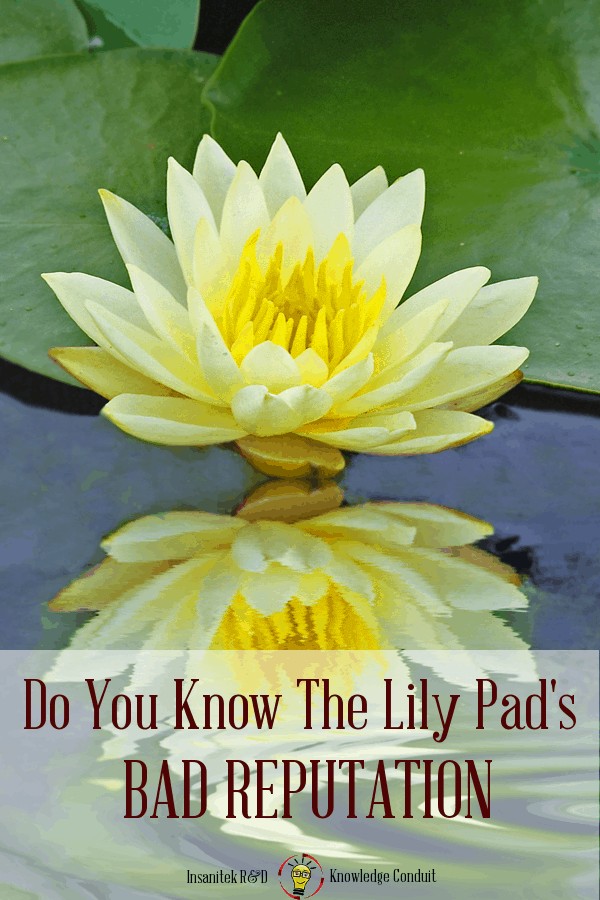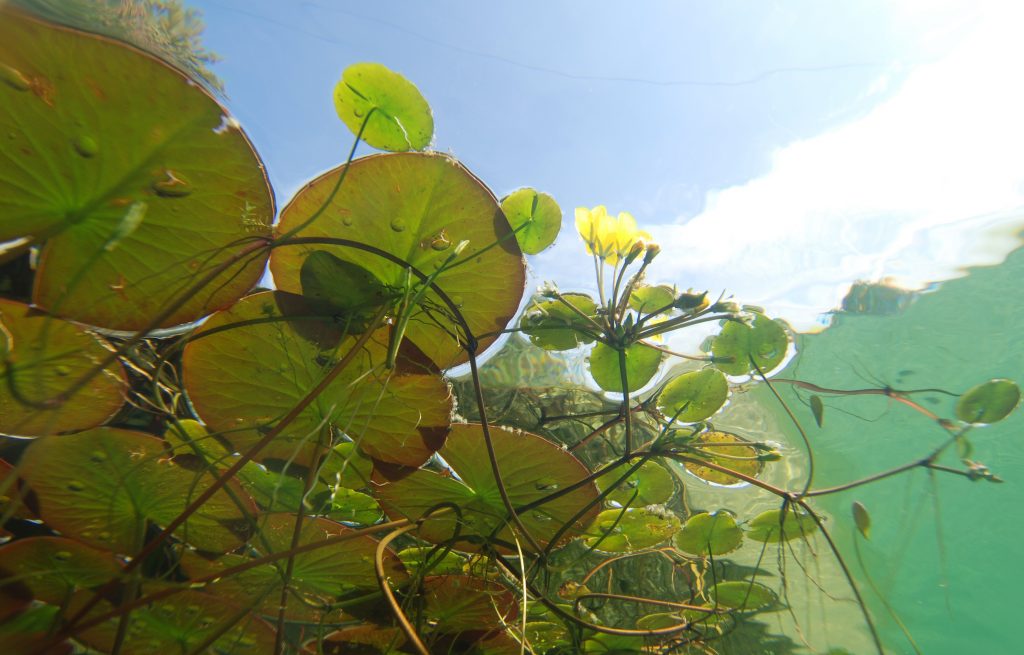A picturesque feature of many ponds is the lily pad. One glance at Monet’s famous paintings and you’ll see that water lilies are beautiful, delicate, and unusual, floating on the surface of the water. Water lilies are unique plants that have adapted to their watery environment and harness the power of surface tension to keep their leaves oriented to the sun’s rays. The adaptations of the water lily help it maximize its energy and make the most of its habitat.
The most striking feature of the water lily is its floating leaves. But it is technically inaccurate to say that the leaves are floating. The leaves aren’t actually free floating; they are anchored to the bottom of the pond by the plant’s long, buoyant stems that link the leaves to its shallow root system. Unlike other aquatic plants, water lilies seek to get as much sunlight as possible by thrusting their leaves above the surface of the water where they can process sunlight through photosynthesis, the means by which the water lily…and other green plants…produce food from sunlight, carbon dioxide, and water.
A key feature to the photosynthesis process is the stomata of a plant, the tiny holes, or pores, on the surface of the plant’s leaves. It is through these holes that the plant takes in carbon dioxide and puts out oxygen. In the water lily, the plant has adapted so that the stomata are only on the upper surface of the leaves, not the underside that would be submerged. The shape of the lily pads and the waxy, water-resistant surface of the leaves help to keep the stomata open so the plant’s respiratory process goes on uninhibited.
The water lily doesn’t have to worry about collecting enough water to sustain itself. Because the plant is found in freshwater ponds, slow moving streams, and lakes, the water lily does not need some of the other adaptation mechanisms that other plants have developed to collect and store water. These include their root systems. The roots of non-aquatic plants often need to be deep and elaborate in order to seek water. Water lilies don’t need such deep roots. The roots of the water lily plant only need to anchor the plant to the bottom of the pond or steam.
The roots of water lily plants are actually tuber, or rhizomes, that spread beneath the floor of the pond. From these tubers, which lay in a dormant state during the winter months, the water lily’s stalks sprout from the bottom of the pond and aim for the surface? The stalks have evolved to include a network of clusters of cells that contain air. These cells help to make the stems buoyant so they float more easily to the surface. Once the stems hit the surface, the buds unfurl the leaves, or lily pads.
 The cluster of hollow cells in the stems and leaves of the plant help it to remain afloat, but the water lily has also figured out how to use surface tension to its advantage. Water tension occurs because the water molecules at the surface of a pond…or any body of water…are more strongly attracted to each other than are the water molecules that are below the surface. This creates a tough, almost membrane-like force on the water’s surface that is slightly harder to penetrate than the water molecules further below the water. Lily pads have small cilia, or hairs, that resist the surface tension and keep the leaves from sinking into the water.
The cluster of hollow cells in the stems and leaves of the plant help it to remain afloat, but the water lily has also figured out how to use surface tension to its advantage. Water tension occurs because the water molecules at the surface of a pond…or any body of water…are more strongly attracted to each other than are the water molecules that are below the surface. This creates a tough, almost membrane-like force on the water’s surface that is slightly harder to penetrate than the water molecules further below the water. Lily pads have small cilia, or hairs, that resist the surface tension and keep the leaves from sinking into the water.
Lily pads have gotten a bad reputation because they can, if the pond lacks enough wildlife to eat the water lilies, overrun a body of water and completely cover the surface. But in a healthy ecosystem, fish and turtles keep the spread of the water lilies in check. In this case, the lily pads are beneficial to the body of water. They provide food and shelter for wildlife, and they cast shade on the water, keeping the water temperatures from getting too high.
While it is not uncommon to see a small frog perched on a lily pad, most are too small to bear much weight. The Queen Victoria water lily (Victoria amazonica), however, boasts some large lily pads that are capable of supporting up to 70 pounds, as long as the weight is evenly distributed across the surface of the leave. The lily pads of the Queen Victoria water lily, native to the Amazon River basin, can measure up to ten feet in diameter.
Sources:
Gillespie, Claire. “Water Lily Adaptations,” Sciencing, 10 Apr. 2018. Web. 5 Oct. 2018.
Mahaney, Jackson. “What Makes Water Lilies Float?” Hunker.com. 15 Jan. 2010. Web. 5 Oct. 2018.
“The World’s Largest Lily Pad.” Green Blogger. 26 Sept. 2010. Web. 5 Oct. 2018.
If yes, then be part of our newest project: The Urban Naturalist Interactive Journal.
While it says urban naturalist, don’t worry, we get plenty of rural in there as well since hiking and day trips aren’t that far from city life.
You can get our first journal page and give your feedback by signing up for the Nature Lover’s List where you’ll get information from a variety of sources and a place to geek out with other nature lovers.
